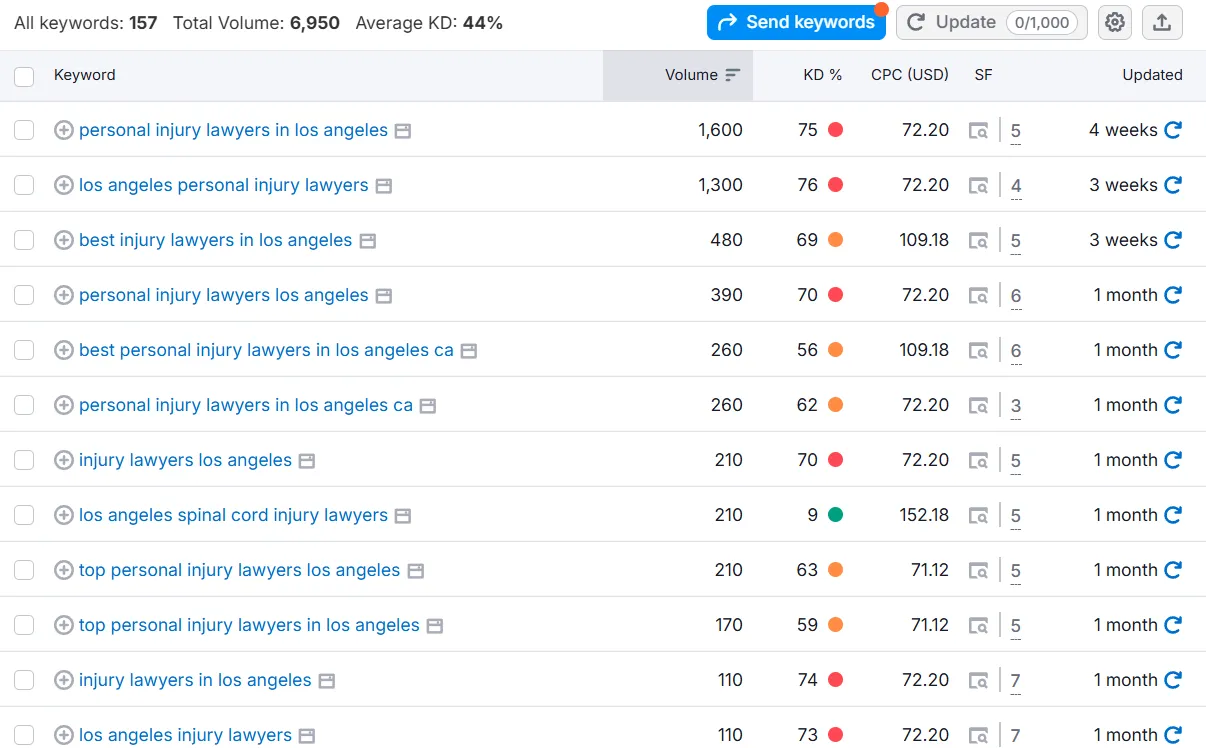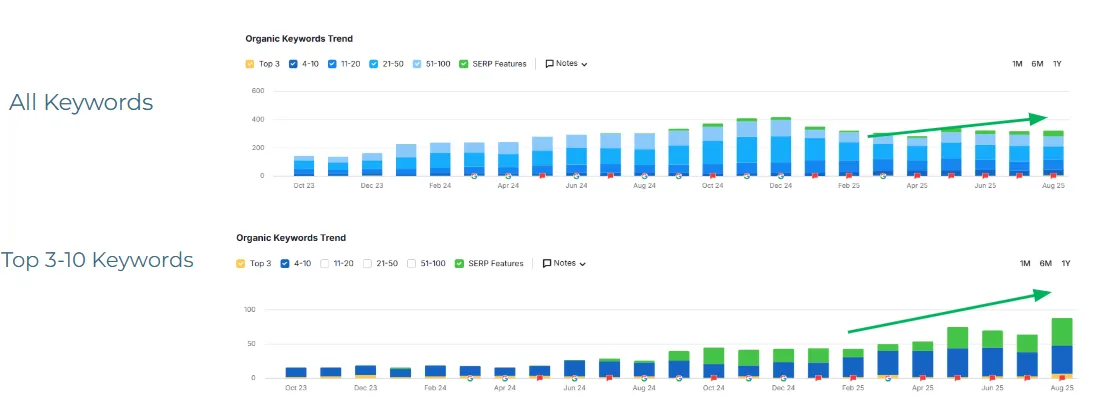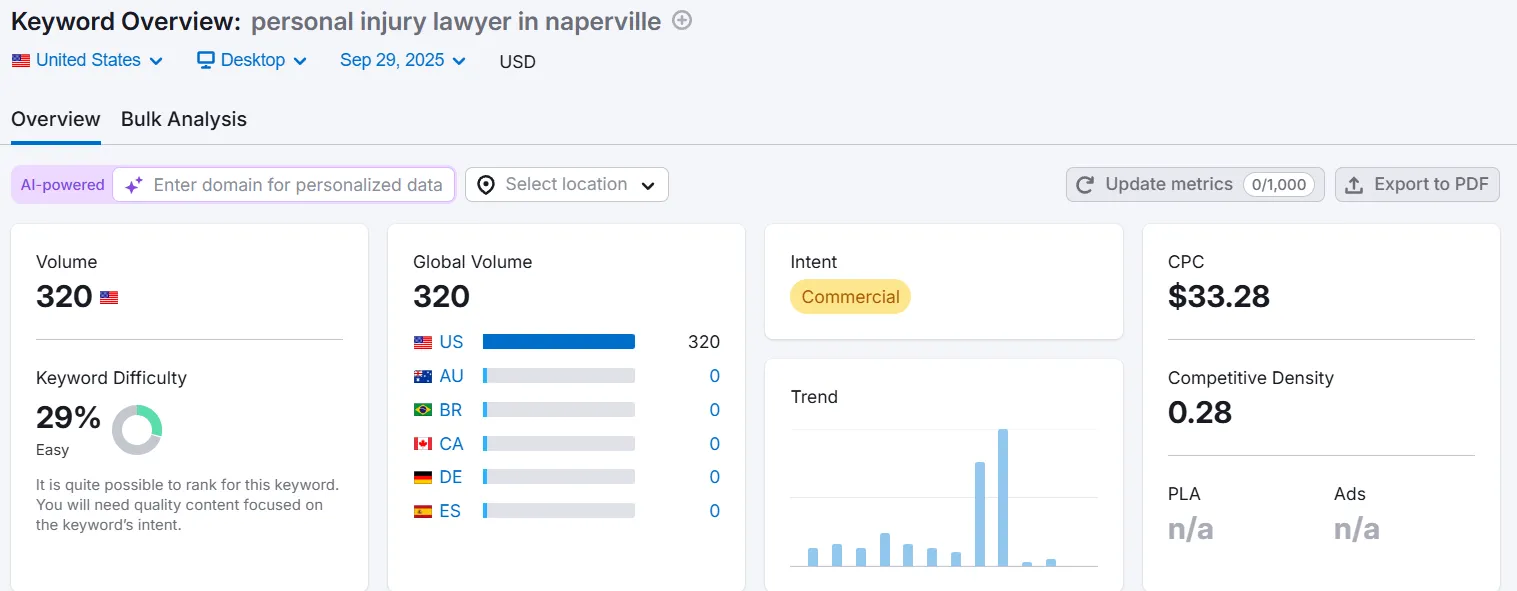
by Dr. William Sen (Co-Founder of Blue Media Marketing Law)
Personal injury law is one of the most competitive legal markets in the United States. Every year, thousands of law firms fight for visibility on Google — and the fight is anything but cheap. Large firms spend millions of dollars on marketing, with budgets that dwarf what most newcomers could even dream of. Their strategies are multi-pronged: dominating TV advertising, investing heavily in Google Ads, and running aggressive SEO campaigns.
Nowhere is this competition more evident than in paid search. In fact, injury-related keywords consistently rank among the most expensive in the world. I’ve seen law firms spend $80 or more for a single click. And here’s the uncomfortable truth: a click is not a lead, and it certainly isn’t a signed case. Many clicks are wasted — someone might be “just browsing,” another person may already have representation, and in some cases, a competitor could even be clicking to drain your budget.
For a small firm just starting out, those economics are devastating. Imagine spending $5,000 on ads and receiving fewer than 100 clicks — only to discover that none of them converted into clients. That is the daily reality for personal injury firms trying to break into this market with paid search alone.
This begs the crucial question: how can a lawyer with limited resources survive — and even grow — in such a cutthroat environment?
Why SEO Offers a Path Forward
Fortunately, there is hope. While Google Ads require massive upfront investment, SEO offers a more cost-effective, long-term approach. In my experience, this is the most realistic path for smaller or newer firms.
To understand why, we need to look at the behavior of big competitors. Large firms often ignore low-volume keywords because they focus exclusively on terms with the highest search demand. Their strategy is scale — they want thousands of cases flowing through their intake systems. That leaves countless “residual” opportunities unclaimed.
I call this the residue strategy: picking up the search terms the giants don’t bother with. These are lower-volume keywords, often niche-specific or locally focused, that big players dismiss because they aren’t “big enough” to move their needle. But for a growing law firm, ranking for these terms can mean steady case flow without burning through millions of dollars.
For example, instead of trying to rank for “Los Angeles car accident lawyer” — where you’re battling billion-dollar firms — you might target “rear-end accident lawyer Glendale” or “dog bite attorney in Torrance.” The search volume might look small, but each of those terms represents potential clients actively searching for help. Collect enough of these small wins, and you create a powerful pipeline of organic traffic that adds up over time.
This is why, when law firms ask me where to start, I almost always recommend SEO first. The initial cost of an SEO retainer is a fraction of what paid campaigns require, and the returns — while slower to arrive — build momentum that compounds month after month.
The Power of Localized SEO
Once we’ve committed to SEO, the next step is knowing where to focus. In personal injury law, geo-targeting is one of the most overlooked but most effective strategies.
If your firm is based in a large city like Los Angeles, New York, or Chicago, the competition is overwhelming. Large firms dominate the broad, high-volume keywords for these metro hubs. They pour money into areas that bring prestige and recognition — neighborhoods like Beverly Hills or Manhattan.
But here’s where the opportunity lies: smaller surrounding cities and suburbs. In Los Angeles, while the big firms chase Beverly Hills, you could target places like Glendale, Long Beach, or Thousand Oaks. These areas have real search volume, and residents there are still searching for legal help. By ranking for these locations, you tap into markets that big players leave untouched — and you capture leads that would otherwise be overlooked.
Thriving in Smaller Towns
In smaller towns and less competitive markets, the strategy changes. With fewer law firms competing, you can often dominate the local SERPs by simply showing up consistently and investing in high-quality SEO content. Targeting your immediate city or county makes you highly visible to the people who matter most: locals looking for a lawyer nearby.
The key is to think local first. Whether you’re in a sprawling metropolitan area or a small town, geo-specific strategies allow you to build authority step by step. Clients don’t always search for “California personal injury lawyer” — often, they’re typing “car accident lawyer near me” or “injury attorney in [city].” By matching your content to these localized searches, you meet clients where they are.
My Personal Experience with Geo-Targeting
When I worked with a mid-sized injury firms in Los Angeles, the attorney initially wanted to compete head-on for “Los Angeles personal injury lawyer.” I advised him against it and instead built campaigns around suburbs like Naperville, Schaumburg, and Evanston. Within months, he began receiving calls and filled forms from those areas — not hundreds of calls, but enough steady leads to sustain his business and grow his reputation. A year later, he was finally strong enough to begin ranking for competitive Los Angeles terms. Feel free to contact me to ask, so I can share real results of that specific client!
Anyway. That’s the beauty of geo-location SEO: it gives you a ladder to climb, step by step, until you’re ready to take on the giants.
The Patience Challenge — Why SEO Takes Time to Deliver
If SEO were instant, every law firm would abandon Google Ads tomorrow. But the truth is, SEO campaigns are a longer game compared to Ads Campaigns. This reality often becomes the challenge for new law firms who are eager — or desperate — for leads as soon as possible.
Unlike paid ads, which generate traffic the moment you fund them, SEO requires time to mature. Google does not instantly reward new websites or freshly optimized pages. Instead, the process involves crawling, indexing, and evaluating authority.
From my own experience, most personal injury SEO campaigns take at least 3–6 months before the first real movement happens. During this period, the firm may feel frustrated: content is published, citations are built, technical SEO is fixed — yet the phone doesn’t ring.
This is the critical stage for many firms and sole proprietor lawyers. They sometimes abandon SEO, and return to the “comfort” of expensive ads. And it’s why so many small firms never manage to break out of the cycle of overspending on clicks. Patience is key.
The good news is that once SEO does begin to work, the growth compounds. Rankings improve steadily, traffic increases organically, and leads start flowing in without the constant drain of pay-per-click.
Think of SEO like planting a tree. In the first few months, nothing seems to happen above the surface. But underground, roots are taking hold, spreading deep into the soil. When the tree finally breaks through, it grows stronger year after year. By contrast, Google Ads are like renting a billboard: the moment you stop paying, your visibility disappears.
The biggest challenge for a new law firm is simply surviving the waiting period. The first six months are often the hardest, financially and emotionally. The temptation to give up is strong — especially when peers or competitors are seemingly everywhere online while your own campaign feels invisible.
I often tell clients that SEO rewards resilience. If you can weather the initial dry spell, the payoff is disproportionately high. By month six to twelve, most campaigns usually begin to see measurable results: rankings climbing, leads trickling in, and the first cases being signed. Beyond that, momentum builds, and suddenly, the firm has a steady stream of clients at a fraction of the cost of paid advertising.
To bridge this gap, I usually recommend a hybrid strategy. While the SEO foundation is being built, some limited Google Ads can provide immediate leads, even if they’re costly. This ensures the firm has cash flow and client activity while waiting for SEO to mature. Once SEO begins to deliver, the reliance on ads can gradually decrease.
My Personal Experience with Clients
I’ve seen firms quit SEO right at the moment when results were about to turn. One client in Texas stopped after four months, convinced it wasn’t working. Six months later, their competitor — who stuck it out — began ranking for dozens of high-value keywords and is now generating consistent leads.
On the other hand, another client in Florida held on through a difficult first half-year. By month nine, they ranked for multiple localized keywords, and within two years, organic search became their main source of cases. That patience turned their firm from a struggling newcomer into a recognized local player.
Leveraging Generative AI in SEO Campaigns for Injury Law
In recent years, one of the biggest game changers in digital marketing has been the rise of Generative AI. While many industries are experimenting with AI tools, law firms have a unique opportunity to use this technology strategically to gain an edge in highly competitive markets.
One of the most pressing challenges for injury law firms is producing enough high-quality content to compete. To rank in search, you don’t just need a few blog posts — you need a library of practice area pages, FAQ articles, local landing pages, and thought-leadership pieces.
Traditionally, this requires either a significant in-house team or outsourcing to expensive agencies.
This is where generative AI can step in. Tools powered by AI can draft content outlines, suggest topic clusters, generate FAQs, and even produce first drafts of blog posts or location pages. Of course, legal content requires careful review by attorneys to ensure accuracy and compliance with ethical rules. But AI can dramatically cut down the time and cost of content creation, allowing smaller firms to compete with larger players who have entire marketing departments.
For example, instead of spending weeks writing location-specific pages one by one, an AI system can generate structured drafts for dozens of suburbs within hours. A lawyer or SEO expert can then refine and fact-check the content, ensuring it’s legally sound and aligned with the firm’s tone of voice.
Smarter Keyword Research and Topic Discovery
AI also excels at analyzing patterns in search queries. By leveraging natural language processing, AI tools can uncover long-tail keywords and semantic variations that humans might overlook. For injury law firms, this means finding opportunities such as:
“What to do after a slip and fall in Glendale”
“Average settlement for a car accident in Torrance”
“Do I need a lawyer for a minor rear-end accident?”
These are the kinds of queries potential clients type into Google — and they’re often ignored by larger firms chasing only broad, high-volume terms. AI can surface these micro-opportunities, which fit perfectly into the residue strategy I discussed earlier.
Personalization and User Experience for AI Results
Another emerging application of AI is in personalized content delivery. Imagine a website that dynamically adjusts its messaging depending on the visitor’s location, type of accident, or browsing behavior. Instead of a static “personal injury lawyer” landing page, the content could adapt to highlight motorcycle accidents if the user searched for motorcycle-related terms.
This kind of personalization not only improves conversion rates but also enhances the user experience — making the visitor feel like the firm is speaking directly to their needs.
My Experience with AI in Law Firm SEO
I’ve already implemented AI workflows with several firms, and the results are promising. One firm used AI to create a bank of 200 FAQs covering every type of accident imaginable, each localized to specific neighborhoods. After attorney review and publication, those pages began ranking for dozens of low-competition keywords within months. The cost savings compared to traditional content production were significant, and the leads generated more than justified the investment.
Generative AI is not just a buzzword — it’s a practical tool that, when used wisely, can level the playing field in the competitive world of injury law. Smaller firms that embrace AI for content generation, keyword research, and personalization can compete more effectively against larger firms with bigger budgets.
The future of SEO for law firms will not be about who can spend the most, but about who can adapt the fastest. And in that race, AI may very well become the differentiator that helps smaller firms rise above the noise.








